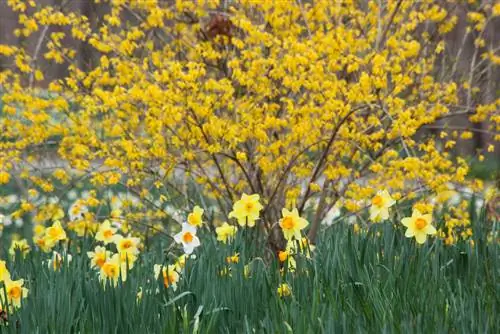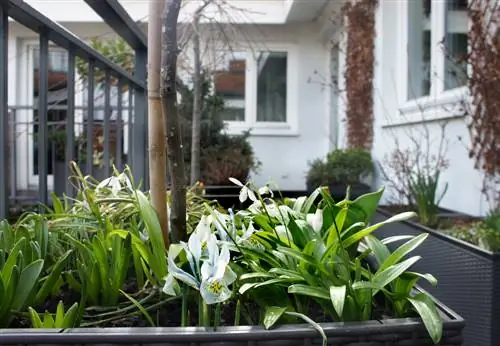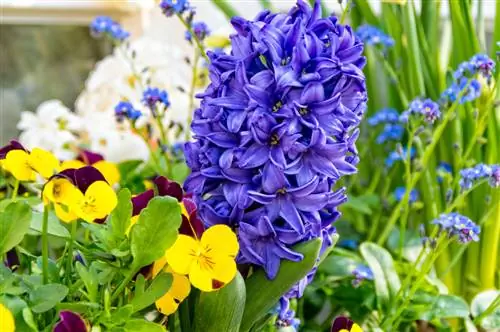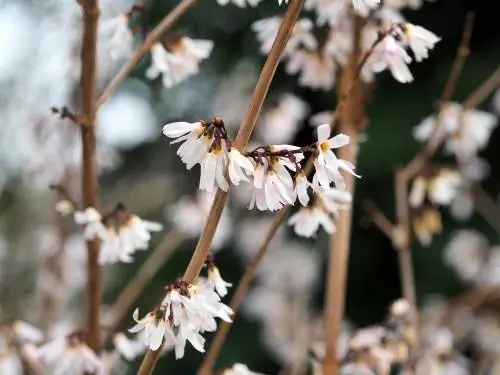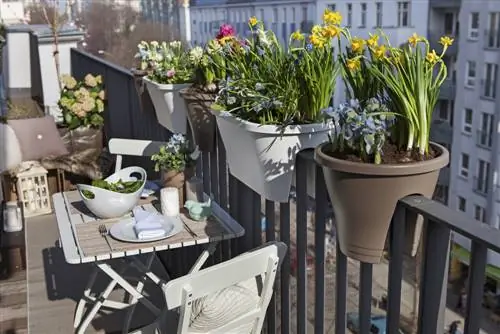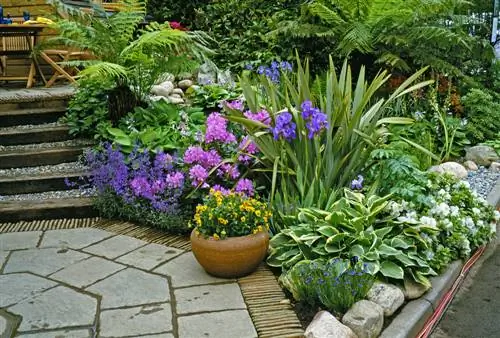- Author admin [email protected].
- Public 2023-12-16 16:46.
- Last modified 2025-01-23 11:22.
In spring it literally wakes us up from hibernation with its bright yellow flowers. It shows off its colorful side for many weeks before it becomes almost unrecognizable thanks to its simple foliage. How can forsythia be combined?
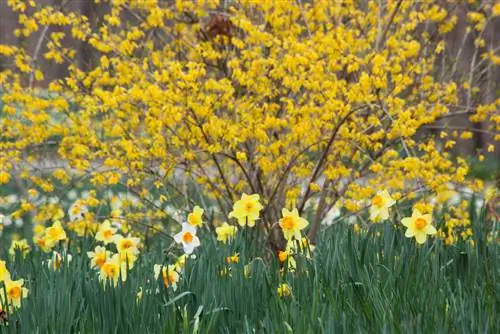
Which plants can the forsythia be combined with?
To successfully combine forsythia, you can plant it with early bloomers such as daffodils, tulips or blood currants and add shrub partners such as lilac, ranunculus, weigela or juniper to create harmonious color accents in the bed or hedge.
What factors should you consider when combining forsythia?
In order for the forsythia to benefit from the combination, you should consider the following factors when choosing companion plants:
- Flower color: yellow
- Flowering time: March to May
- Location requirements: sunny, humus-rich and nutrient-rich soil
- Growth height: up to 3 m
The yellow flower color of the forsythia sets the tone in spring and should therefore harmonize with the external appearance of the planting partners.
You can combine the forsythia with plants that bloom at the same time as it. But it is also advantageous to specifically plant plants in your neighborhood that only bloom when the forsythia only looks quite unspectacular with its green foliage.
When planning, also take into account the relatively fast growth of the forsythia and its size of up to 3 m. Smaller companion plants should definitely be placed in the foreground, otherwise they will be visually overlooked.
Combine forsythia in the bed or hedge
The forsythia likes to be found in the background of a bed and can create visually attractive accents when combined with other flowering shrubs. It is also popular as a hedge. Whether in the bed or in the hedge - the forsythia goes well with numerous other trees that have similar location requirements. You can also combine them impressively with early bloomers, whereby the early bloomers can be placed in the foreground around their root area or at a distance.
Optimal planting partners for forsythia include:
- Early bloomers such as daffodils and tulips
- Lilac
- Ranunculus
- Weigela
- Blood Currant
- Juniper
- Cornelian cherry
- Azelee
Combine forsythia with juniper
A fantastic combination is created when the forsythia is allowed to make an appearance together with the juniper. The evergreen juniper should best be kept to a maximum height of one meter and planted in front of the forsythia. Behind the juniper, the yellow-flowering forsythia really shines.
Combine forsythia with daffodils
The simultaneous flowering of the daffodils and their flower color, which is based on forsythia, make them perfect companion plants. With their help, the color of the forsythia is also enhanced in its root area. To intensify the overall expression, it is advisable to plant several daffodils.
Combine forsythia with blood currant
Together with the blood currant, the forsythia is experiencing a completely new revival. The bloodcurrant presents its magnificent flowers around the same time as the forsythia. With its blood-red flowers it creates a wonderful contrast to the sunny yellow of the forsythia.
Combine forsythia as a bouquet in the vase
Forsythia branches can make spring bouquets and especially Easter bouquets a real feast for the eyes. Add a few white and yellow daffodils and red tulips to the bouquet to bring it to life in color. Individual branches from other distinctive trees also fit into such a bouquet.
- Daffodils
- Tulips
- Corkscrew hazelnut branches
- Kitten Willow

